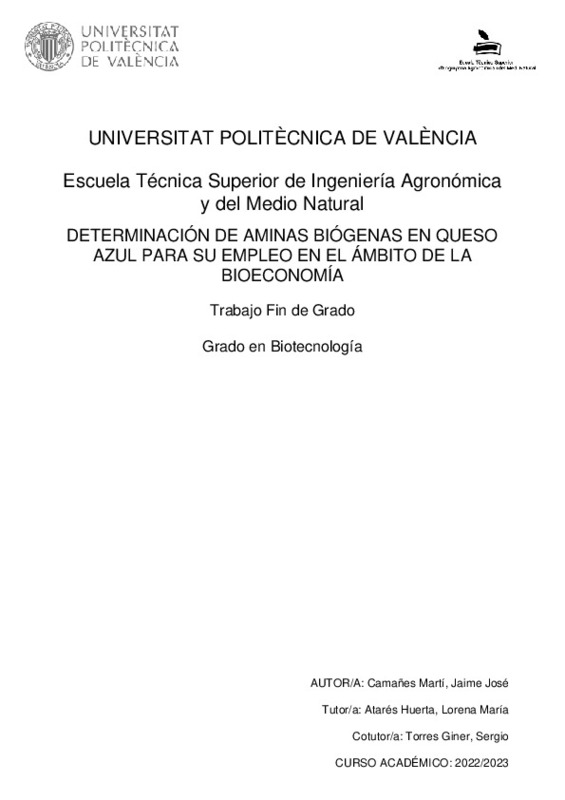- RiuNet repositorio UPV
- :
- Docencia
- :
- Trabajos académicos
- :
- ETSIAMN - Trabajos académicos
- :
- Ver ítem
JavaScript is disabled for your browser. Some features of this site may not work without it.
Buscar en RiuNet
Listar
Mi cuenta
Estadísticas
Ayuda RiuNet
Admin. UPV
Desde el lunes 3 y hasta el jueves 20 de marzo, RiuNet funcionará en modo de solo lectura a causa de su actualización a una nueva versión.
Determinación de aminas biógenas en queso azul para su empleo en el ámbito de la bioeconomía
Mostrar el registro completo del ítem
Camañes Martí, JJ. (2023). Determinación de aminas biógenas en queso azul para su empleo en el ámbito de la bioeconomía. Universitat Politècnica de València. http://hdl.handle.net/10251/196078
Por favor, use este identificador para citar o enlazar este ítem: http://hdl.handle.net/10251/196078
Ficheros en el ítem
Metadatos del ítem
| Título: | Determinación de aminas biógenas en queso azul para su empleo en el ámbito de la bioeconomía | |||
| Otro titulo: |
|
|||
| Autor: | Camañes Martí, Jaime José | |||
| Director(es): | ||||
| Entidad UPV: |
|
|||
| Fecha acto/lectura: |
|
|||
| Resumen: |
[EN] The current European strategies that affect the agri-food field aim to promote research and
innovation in the field of Bioeconomy through the use of waste. The objective of this study
is to determine the content of ...[+]
[ES] Las actuales estrategias europeas que afectan al ámbito agroalimentario pretenden potenciar la investigación e innovación en el ámbito de la Bioeconomía mediante el aprovechamiento de residuos. El presente proyecto ...[+]
|
|||
| Palabras clave: |
|
|||
| Derechos de uso: | Reconocimiento - No comercial - Sin obra derivada (by-nc-nd) | |||
| Editorial: |
|
|||
| Titulación: |
|
|||
| Tipo: |
|
recommendations
Este ítem aparece en la(s) siguiente(s) colección(ones)
-
ETSIAMN - Trabajos académicos [3556]
Escuela Técnica Superior de Ingeniería Agronómica y del Medio Natural







